How to make your own green roof – 07.09.22 – Green roofs are an ingenious way to give your garden extra wow factor. Seeing plants on top of the shed instead of a drab tarp is a great way of filling two needs with one deed. You’ve doubtless seen them on programs like Grand Designs and been impressed with how they use their space to the utmost potential. You likely also wondered how they’re made, and you’ve come to the right place – DIY green roofs are one of our specialities.
In this article, we will take you step-by-step towards making a living green roof of your very own. From tips on picking the right building, to when to use green roof fertiliser and preparing the roof with the correct edging, drainage layer and more.
Tips for making a living green roof
While this article will focus on lightweight sedum green roofs, similar advice applies to wildflower green roofs. Sedum roofs are the ones that you see on TV all the time, probably making you wonder how to make a roof like it. The truth is, they’re easy to install, simple to look after and don’t need a lot of attention. Sedums are by no means the only plants that like living on green roofs, but if you’re a newbie, or if your building hasn’t been specifically designed to support a living roof, sedum is a good choice for you.
Selecting your building
When making your own green roof, choosing which building you want to use in the garden is crucial. You can’t just place a layer of soil and plants onto a roof and expect it to hold together! Remember that it works both ways – the plants must be happy with the conditions they’re growing in. Equally, the building must be able to take the weight of the plants. Keep this in mind when picking the building for your DIY green roof.
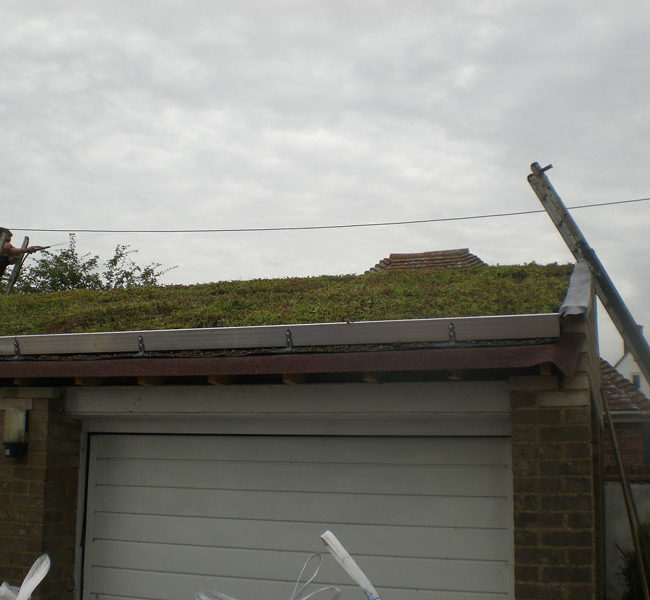
Where to place your new green roof
If you want to grow a sedum green roof, it is best to choose a building that gets a good amount of sunshine. If the roof is in the shade for more than half a day, sedum plants will not get the amount of light they need to survive.
Steep slopes can turn green roofing into a real challenge. Firstly, a slope of over 20 degrees just isn’t practical at all, as it will be difficult to anchor the plants and not have them slump and slide off. Also, rainwater will run off before the plants have a chance to benefit from it. A steep slope might look good to start with, but in 6 months’ time, you’ll wish you never thought of it.
Slopes between 10 and 20 degrees show the plants off nicely. You can see them easily from the ground and the visual effect is great. However, you will need to irrigate them in dry weather because just like super-steep slopes, rainwater tends to runoff before the plants can benefit from it.
Weight bearing capacity
When making a living green roof, keep in mind that each green roofing system is different. Consult the supplier and be sure of what you are buying. Harrowden Turf’s Enviromat build-up weighs around 42kg per square metre when saturated, but you will need to walk on it to install the Enviromat and maintain it so your roof needs to be able to support 120kg per square metre.
Take care not to overload your roof and always allow for what is known as “live loading”. This is the temporary extra weight like snow or somebody stepping on the roof.
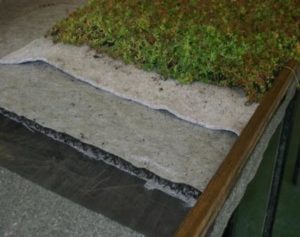 |
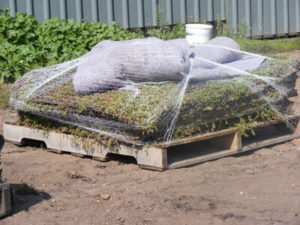 |
|
 |
 |
Preparing the roof
The green roof build-up isn’t a substitute for waterproofing. Before you start to add green roofing components to any building, the roof must be watertight and the waterproofing must be in excellent condition.
Soak the roof with a hosepipe before ordering any green roofing materials. If a puddle sits on the roof for a long while, you may have problems with the plants later on. Be confident that there are no pockets of poor drainage before you start work.
Next, add a roof edging. If your roof has an upstand, you will be fine. Otherwise, use timber to make your own upstand or buy a purpose-made green roof edging. This will keep everything neat, prevent the vegetation blankets from becoming dry at the edges and stop wind uplift. If you’re making your own edgings, make sure that water can drain freely under or through them and please don’t put nails through your waterproofing.
Do you need a drainage layer?
For a flat roof that has a slope of 3 degrees or less, you will need a layer of drainage matting, as sedums hate having wet feet and a drainage layer is insurance against slow drainage. TurfOnline’s drainage board in particular is very lightweight, is cost-effective and could save you a lot of heartache during a wet season.
Installing a drainage layer is one of the easier steps in making a green roof. Simply roll out the drainage sheets to the roof edge, perpendicular over the root barrier foil. If you find yourself with a bit too much, cut the drainage layer to size on the ground – never cut directly on the roofing, as this could end up ruining your new DIY green roof.
Adding the plants
Enviromat is a high-specification vegetation blanket designed to make adding plants to your roof as fuss-free as possible. The plants are already growing in the mat – all you need to do is unroll it onto the prepared roof.
Keep in mind that the filled mat is heavy and you may need help to lift it onto the roof. Another useful tip is to measure each piece and cut it to size before you put it on the roof. That way you reduce the risk of accidentally puncturing the waterproofing.
Watering well – But not too well
The plants need water to help them settle in. As soon as everything has been installed, water the plants to the point of runoff. They shouldn’t be allowed to dry out in the first few weeks so keep an eye on them, particularly in hot or windy weather. Bear in mind though, that excessive amounts of water will encourage weeds to grow, so try to get the balance right.
The first few weeks
During the first few weeks of your new sedum green roof, keep an eye on watering and keep drainage outlets clear. Don’t allow any fallen leaves or other debris to sit on the roof for more than a few days at a time, and be sure to use green roof feed in spring or early summer. Most importantly, enjoy!
Get a quote for sedum green roof kits
Learn more about green roofing
Save
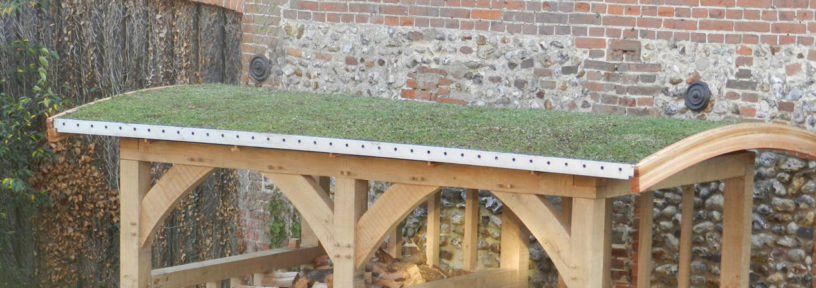
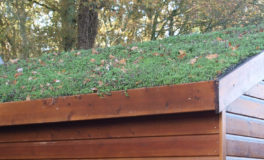 A guide to green roof construction
A guide to green roof construction 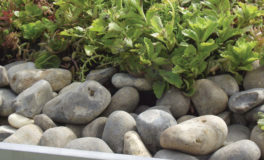 Creating a green roof just got easier with Enviromat kits
Creating a green roof just got easier with Enviromat kits 

